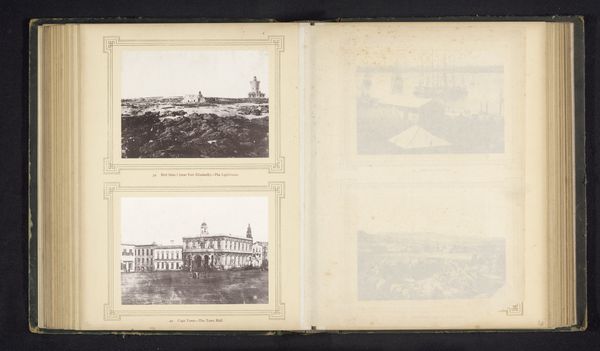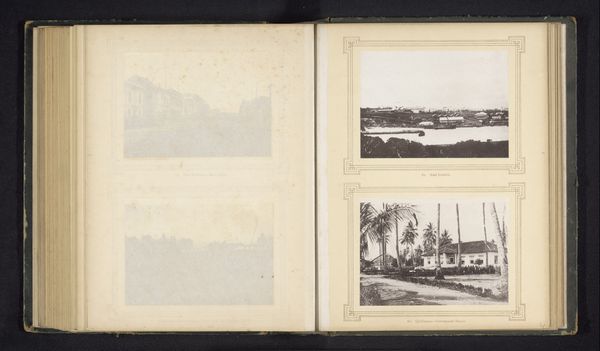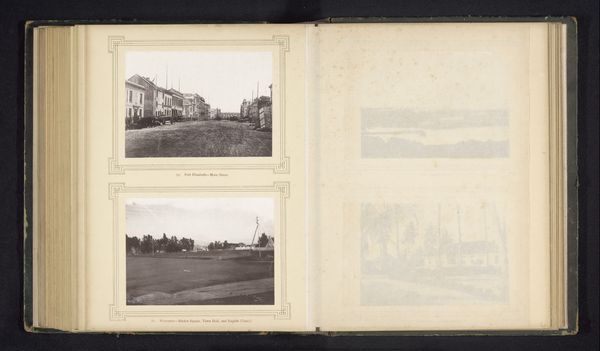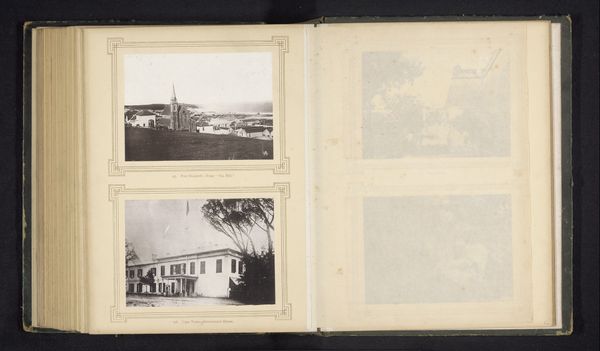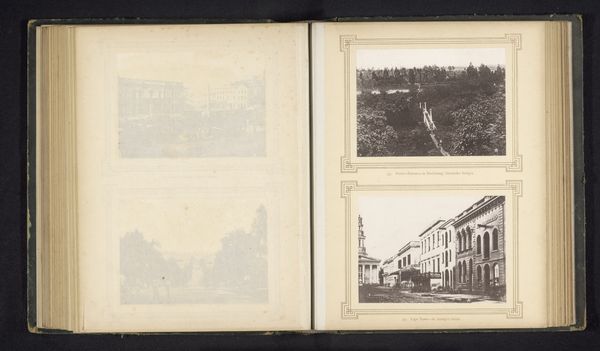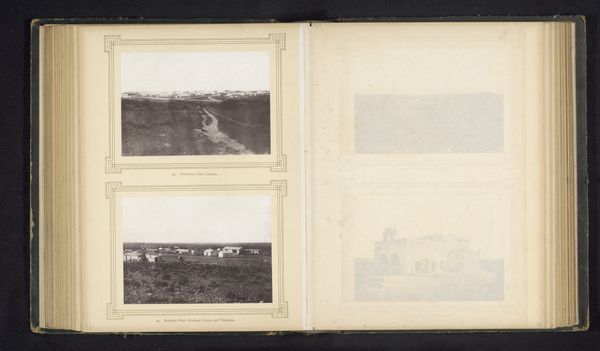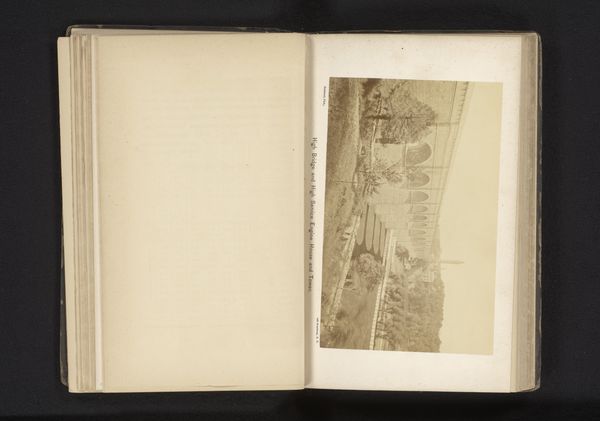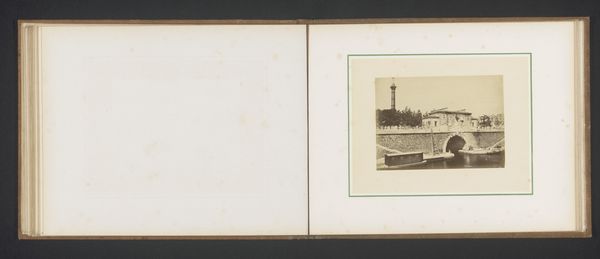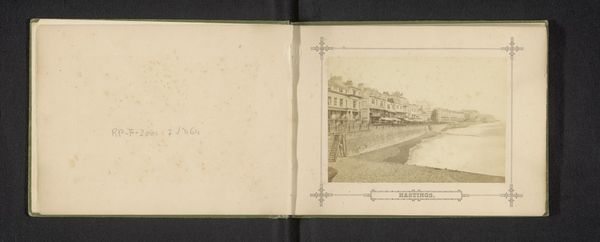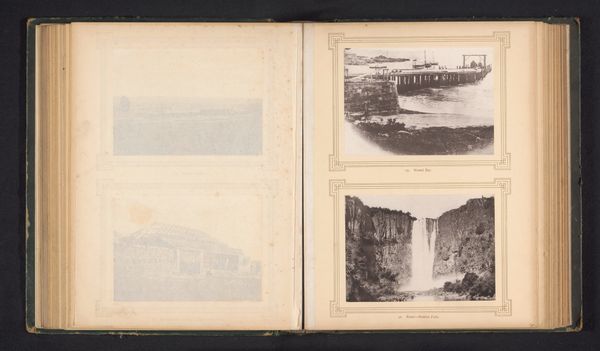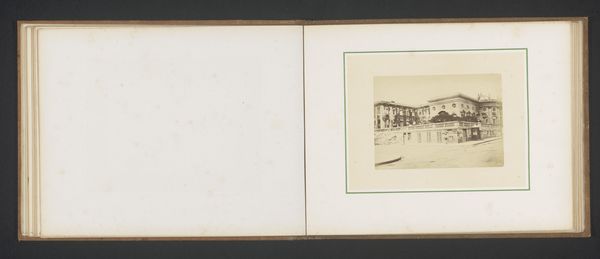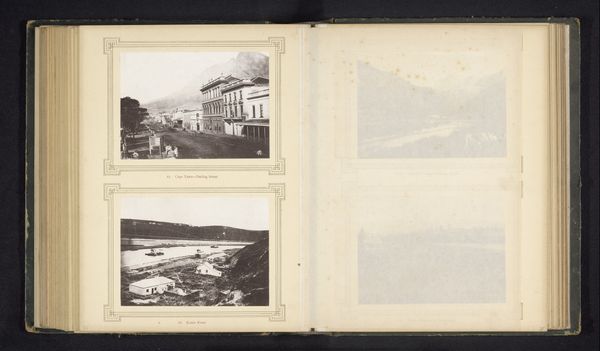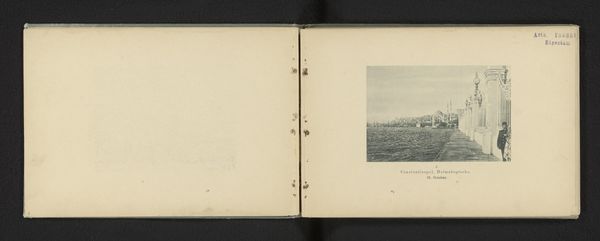![['Port Elizabeth - "the hill"', "King William's Town-Buffalo River Bridge"] by Sam Alexander](/_next/image?url=https%3A%2F%2Fd2w8kbdekdi1gv.cloudfront.net%2FeyJidWNrZXQiOiAiYXJ0ZXJhLWltYWdlcy1idWNrZXQiLCAia2V5IjogImFydHdvcmtzL2NiZDZmMjIzLTFlYTAtNDkxYS1hNDE0LWUzOWExNzUxZjgwNS9jYmQ2ZjIyMy0xZWEwLTQ5MWEtYTQxNC1lMzlhMTc1MWY4MDVfZnVsbC5qcGciLCAiZWRpdHMiOiB7InJlc2l6ZSI6IHsid2lkdGgiOiAxOTIwLCAiaGVpZ2h0IjogMTkyMCwgImZpdCI6ICJpbnNpZGUifX19&w=3840&q=75)
['Port Elizabeth - "the hill"', "King William's Town-Buffalo River Bridge"] before 1880
0:00
0:00
print, photography, albumen-print
#
ink paper printed
# print
#
landscape
#
river
#
photography
#
cityscape
#
albumen-print
Dimensions: height 290 mm, width 219 mm
Copyright: Rijks Museum: Open Domain
Curator: Here we have a fascinating photographic print from before 1880, a page showing images entitled 'Port Elizabeth - "the hill"' and 'King William's Town-Buffalo River Bridge', crafted using the albumen process. Editor: It has this somber, quiet tone about it. The composition is pretty straightforward, a sort of then-and-now study across locations, divided by land and water. Curator: Indeed, albumen printing was common then, involving coating paper with egg white and silver nitrate, creating a glossy surface for the photographic image. Think about the material resources and labor needed to gather eggs, prepare the chemicals. This print shows development of early urban centers in South Africa at a key time in their expansion. Editor: Albumen, quite resourceful! Beyond its materiality, the imagery itself is layered. The architecture hints at colonial influence, with the steeple piercing the skyline of Port Elizabeth. It carries all sorts of religious and political connotations— a statement of dominance. Curator: Right, and note the stark contrast between the open field in 'Port Elizabeth' and the river spanned by infrastructure in 'King William's Town.' It's a study in contrasting colonial spaces of leisure and infrastructure. Editor: Yes, but there’s also the symbolic bridge linking disparate worlds, connecting different populations or maybe even different ways of life along the Buffalo River. Perhaps a conscious nod to progress? Curator: Perhaps. But what’s been built, and at what cost? The environmental transformation implicit in bridging a river is a physical statement about colonial will imposed on the landscape and also serves as infrastructure for exploiting raw materials, especially through trade via railways and waterways. Editor: You always bring it back to the real, lived world. I appreciate that! Seeing how these historical markers get transformed through the lens of time makes you wonder, though: What future interpretations await our own modern-day monuments? Curator: It’s a potent reminder that what we create, the very materials we choose, tells a very detailed story to future generations. Thank you for that perspective.
Comments
No comments
Be the first to comment and join the conversation on the ultimate creative platform.
